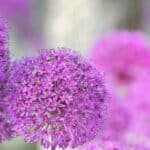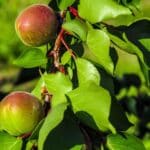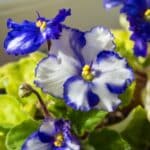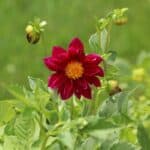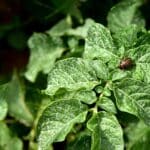The Salvia plant (Salvia officinalis) is a perennial shrub of the mint family (Lamiaceae) that is more commonly referred to as sage or common sage and is sometimes also called culinary sage or garden sage. This wise plant (“sage” means “wise”) is very popular in ornamental gardens as well as herb gardens.
The best companion plants for salvia include flower varieties like poppies or primrose and vegetable or herb plants like rosemary, strawberries, carrots, and tomatoes.
In this guide, we will look closer at these other plants to add to your garden bed if you want your sage plants to flourish.

What To Plant With Salvias?
Over 1000 species of salvia plants include shrubs, perennials, and annuals. Most of these varieties grow about 5 inches tall with velvety leaves and green branches that turn brown and woody over time. Salvias commonly flower in early summer and produce long camphor-scented blooms with blue or pink flowers.
These plants enjoy full sun but can also be grown in partial shade. They require moist and well-drained soil with a neutral pH level. They prefer clay loam soils but can grow well in other soil types.
Sage’s simple growing requirements mean they can be paired with various neighboring plants. Let’s quickly look at some of the best companion plants to grow with common or Russian sage.
Poppy Mallow
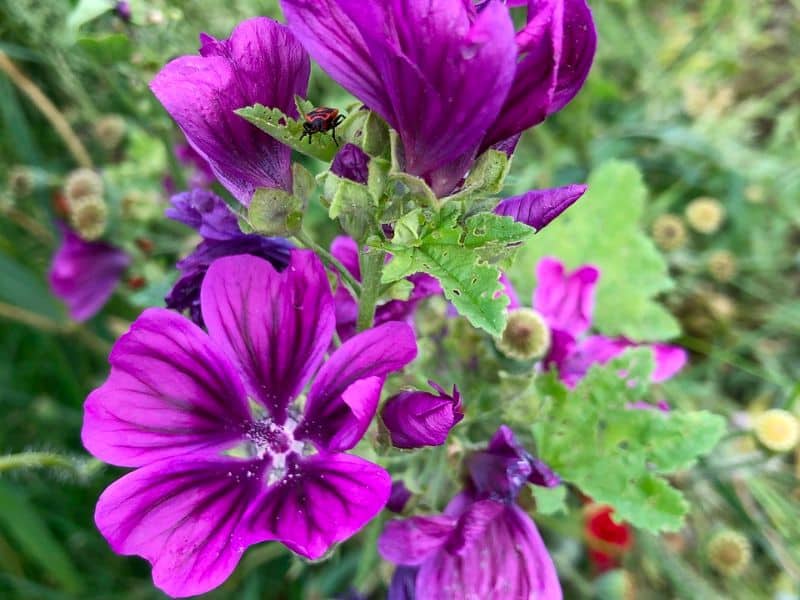
The poppy mallow (Callirhoe involucrata) is often referred to as the purple winecup because of the cup design the magenta-colored flowers form. There are nine different species of poppy; most species form impressive displays of flowers and bloom all summer. Some species can even bloom until fall.
Since poppies and salvia bloom in the summer, they can produce a beautiful display of purple and pink flowers that will attract pollinators. These plants are ideal ornamental features to add on a sun-baked patio, a container display, or alongside a walkway.
These clay-loving companion plants enjoy lots of sunlight and can be difficult to transplant once established. Since the foliage grows up to 12 inches tall, it is usually best to plant them behind or alongside salvias.
Evening Primrose

Evening primroses (Oenothera L.) are good flowering plants to add to a salvia garden if you love vibrant displays of color. The common primrose is also called sun cups or sundrops, typically growing 2 – 4 feet tall.
These flowering plants will attract plenty of pollinators to your garden. Their yellow flowers (some varieties have pink or purple/blue flowers) can complement the purple flowers of salvia very well.
It is usually best to grow these biennial plants behind salvia so they won’t overpower your herb foliage. Sage and sun cups can create an eye-catching landscape feature when planted on a large scale. Many gardeners perform companion planting with salvias and sundrops in raised beds for a more striking overall appearance.
Sun cups love lots of sunlight but can be grown in light-shady areas. They also require well-drained soil but could be more drought-tolerant.
Carrots
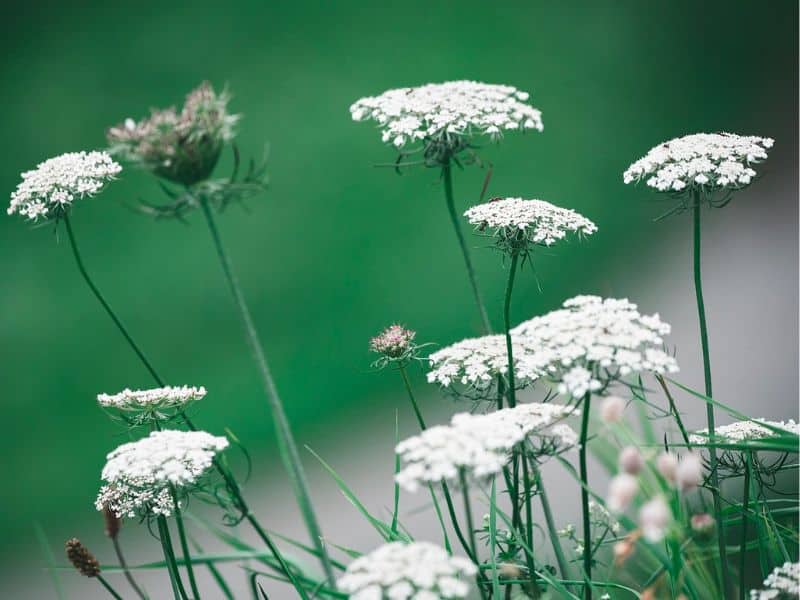
Most gardeners believe that carrots (Daucus carota) and salvia are soul mates because the eucalyptus scent of salvia helps repel pests like carrot rust flies that might harm your carrot crops. Many gardeners also believe that growing sage next to carrots can improve the taste of carrots.
Carrots are low-maintenance plants that won’t compete for space or nutrients in your garden bed. The leafy green foliage of carrots will also fill out open gaps in your garden bed, and the delicate leaves of carrots can enhance the overall look of your salvia growths. Sage and carrots can be consumed, making these two plants ideal for those who want to grow their own food.
You can sow these clay-loving companion plants in your sage garden bed in early spring and leave them to grow throughout summer. By fall, your carrots will be ready to harvest and taste a lot sweeter, thanks to the effect of the salvia plants.
Strawberries
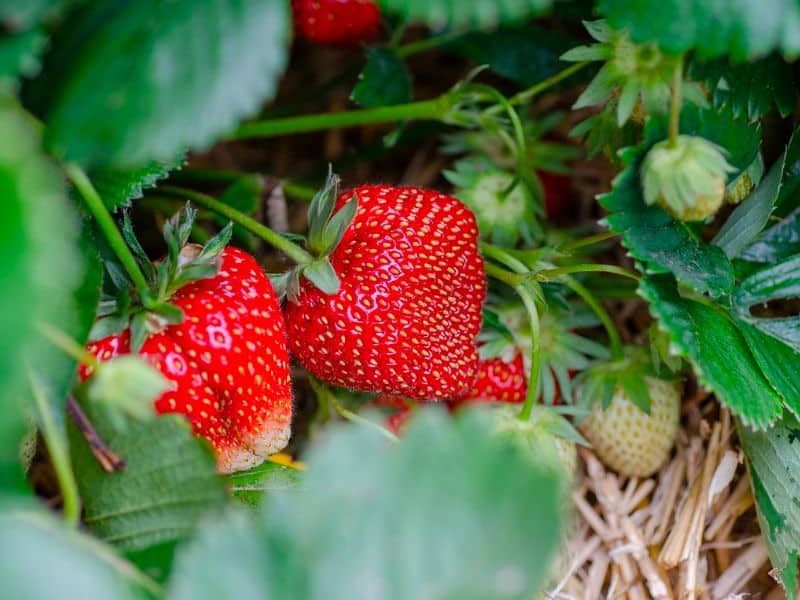
Strawberries (Fragaria x ananassa) are great plants to grow alongside salvia growths because the scent of your salvias will deter pests like slugs on strawberries. Gardners also believe that salvia enhances the flavor of strawberries and makes them a little bit sweeter.
The strawberry plant requires little maintenance and can be grown in the same garden bed as sage. You can grow them in front of or around salvia because they are short-statured with a maximum height of 4 – 12 inches. Strawberries need lots of direct sunlight and fare well in just about any soil type, including clay soils that sage loves.
If you want strawberries and salvia to flower simultaneously, look for overbearing strawberry varieties. Strawberries typically bloom in early summer, but some flower in late summer to early fall. The blue flowers of salvia will look beautiful behind a row of strawberries with their tiny white flowers and bright red berries.
Tomatoes
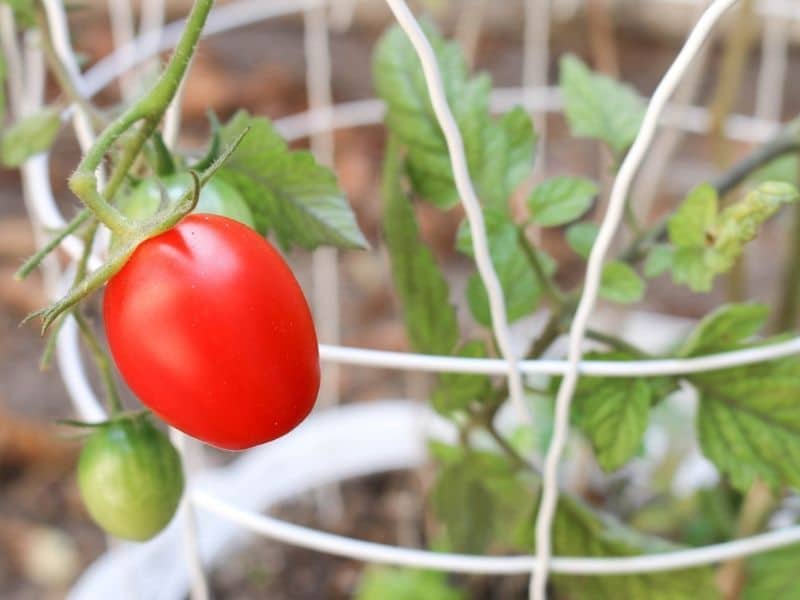
Vegetable gardeners often pair tomatoes (Solanum Lycopersicum L.) with salvia plants because salvias grown in the same garden bed can repel many tomato plant pests like flea beetles, and these hardy perennials will attract wasps that feed on hornworms. Sage also attracts pollinators like honey bees that can boost your tomato yields.
Tomatoes bloom during the growing season (spring and summer) and will have vibrant red fruits about 45 -100 days after planting the seedlings. If you are in luck, you might see those blue flowers of salvia pop up amongst your tomato plants just as the fruits start to ripen, creating an eye-catching effect.
You can plant tomatoes and perennial salvias in direct sunlight in well-drained soil. Tomatoes flourish in most soil types as long as the soil is well drained.
It is essential to realize that salvia will be shorter than your tomatoes. Since sage requires a lot of sunlight, you should grow it with plenty of space between tomatoes or in a south-facing location so the tomatoes won’t overpower your salvia.
Rosemary

Rosemary (Salvia Rosmarinus) is a plant that isn’t too friendly with other plants. Surprisingly enough, this herb does grow well alongside salvia, and many gardeners believe that rosemary plants promote the growth of salvia. They will also attract pollinators like bees and butterflies to your gardens.
Pairing these two fragrant plants in the same garden can create a striking effect. Rosemary bushes can grow up to 4 feet tall and look charming if you plant salvias in front of them to conceal their base. These aromatic herbs produce flowers during early summer, and both produce blue or dark purple flowers. Combining these two, you will have a tall backdrop with a low flowering shrub in the front.
Rosemary, as with salvia, is edible. These aromatic plants also have many medicinal benefits and are used to flavor foods like bread. Some chefs also combine rosemary and baby salvia to season roasted foods.
When planting sage with salvias, you do, however, need to be careful. Rosemary doesn’t grow well in clay or heavier soil types, and it can wilt if exposed to too much sun. Pairing these two neighboring plants in light shade in a well-draining soil type is best.
Foxtail barley
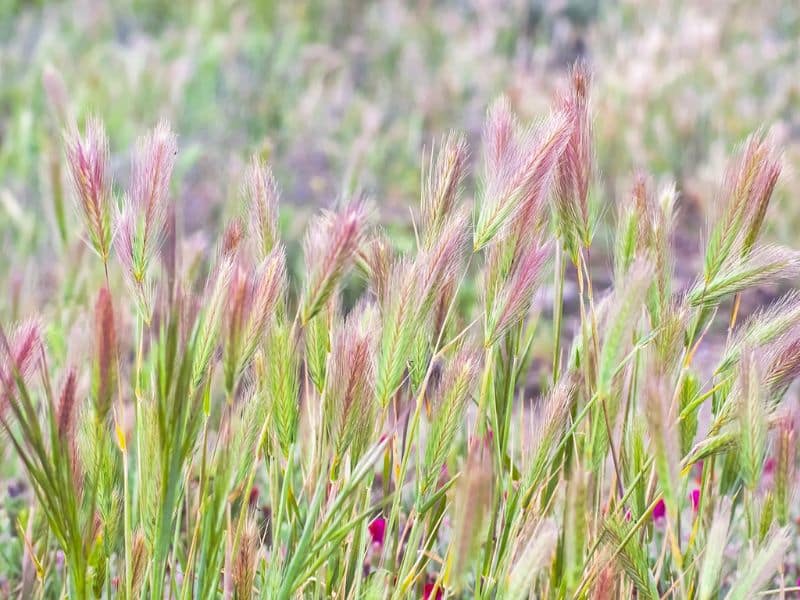
Foxtail barley (Hordeum jubatum), also referred to as bobtail barley or squirrel tail barley, are ornamental grasses that also pair well with salvia because the purple flowers and white, reddish, or orange seedheads of barley can create a very soft, delicate, and striking overall look. The color and texture of barley will create plenty of contrast alongside the rougher velvety leaves of salvia.
Squirreltail barley has little nutritional value for animals and isn’t a herb or food source. You will only be adding these ornamental grasses to your garden for decorative purposes.
This plant can grow 1 – 3 feet tall which means they are best positioned alongside or behind salvia growths. This grass variety develops well in full sun and is relatively drought-tolerant.
Final Thoughts
We hope that you found this guide useful and that pairing your sage with these plant species will help you get the best year’s growth for sage and any neighboring plants you might add to your garden bed. If you want to find out more about companion planting for other plant species then you should also have a look at some of our other guides. With our guides, you can find all the best and latest gardening tips.


